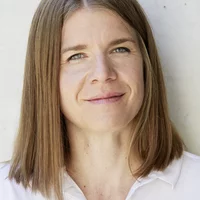Duration: 2006-2008
Contact: Sebnem Aksoyoglu, sebnem.aksoyoglu@psi.ch
Scope of project
This project is about the aerosol modelling in Europe with a focus on Switzerland during summer and winter periods.
Key findings
- Both measurements and model predictions suggest that organic particulate matter and particulate nitrate are the main aerosol components in winter. In summer, organic aerosol, which is mainly secondary, dominates the aerosol composition.
- The relative contribution of aerosol components was modelled very well. The absolute concentrations of aerosol components were in general reproduced rather well, except for the cold winter 2006 where the bias was higher than in the other periods. The acceptable model performance criteria were met for all investigated components in January 2007.
Fractional composition of measured (left) and modelled (middle) aerosols as well as absolute concentrations (right) in January 2006 at Zurich (top) and in June 2006 at Payerne (bottom)
- In January 2006, the highest PM2.5 concentrations were predicted around the Ruhr area in Germany and Krakow in Poland; model results suggest that secondary inorganic aerosol and primary aerosol are the main components in those areas, respectively. In summer, secondary aerosol dominated the aerosol composition both in Europe and in Switzerland.
Modelled monthly average PM2.5 concentration in January 2006 in Europe.
- The contribution of the biogenic emissions to the SOA formation in Switzerland was predicted to be very large and to originate mainly from monoterpenes and sesquiterpenes, as well as oligomerization of biogenic oxidation products.
- Simulations with reduced NH3 and NOx emissions indicated that inorganic aerosol formation is more sensitive to NH3 emissions in a large part of Europe (97 %) in winter. The effect of NH3 emission reductions on aerosol mass is predicted to be lower in summer (45 %). On the other hand, model results suggest that aerosol formation over the Swiss Plateau is NOx limited in both seasons.
Publications
Journal Articles
Aerosol modelling in Europe with a focus on Switzerland during summer and winter episodes
Aksoyoglu, S., Keller, J., Barmpadimos, I., Oderbolz, D., Lanz, V. A., Prévôt, A. S. H., and Baltensperger, U., 2011
Atmos. Chem. Phys., 11, 7355-7373.
DOI: 10.5194/acp-11-7355-2011
Reports
Andreani-Aksoyoglu, S., Keller, J., Barmpadimos, I., Oderbolz, D., Tinguely, M., Prévôt, A. S. H., Alfarra, R., and Sandradewi, J.: Modelling of air quality for winter and summer episodes in Switzerland, Paul Scherrer Institute, PSI Report Nr. 09-06 09-06, 2009.
Conference Contributions
Andreani-Aksoyoglu, S., D. Oderbolz, J. Keller, I. Barmpadimos, A.S.H. Prévôt, and Baltensperger, U.: Application of CAMx Model in Switzerland with the New SOA Mechanism, in: Air Pollution Modeling and its Application XX NATO Science for Peace and Security Series C: Environmental Security, 2010, 109-280, DOI: 10.1007/978-90-481-3812-8_2, edited by: Steyn, D. G., and Rao, S. T., 119-123, 2010.
Andreani-Aksoyoglu, S., J.Keller, Alfarra, M. R., Prévôt, A. S. H., Sloan, J. J., and He, Z.: Contribution of biogenic emissions on carbonaceous aerosols in summer and winter in Switzerland: A modelling study 29th NATO/CCMS International Technical Meeting on Air Pollution Modelling and its Application, Aveiro, Portugal, 2008.
Andreani-Aksoyoglu, S., J.Keller, M.R.Alfarra, J.Sandredewi, Prévôt, A. S. H., and U.Baltensperger: An aerosol modelling study of winter and summer periods in Switzerland, Advanced Atmospheric Aerosol Symposium, Naples, Italy, 2008.
Andreani-Aksoyoglu, S., Keller, J., Alfarra, M. R., Sandradewi, J., and Prévôt, A. S. H.: Seasonal variability of aerosol composition in Switzerland: A modelling study, Croatian Meteorological Journal, 43, 282-286, 2008.
Andreani-Aksoyoglu, S., Keller, J., Oderbolz, D., Barmpadimos, I., Prévôt, A. S. H., and Baltensperger, U.: Modelling of aerosol composition in Switzerland: seasonal and annual variability, Air Quality 2009, Istanbul, Turkey, 2009.
Andreani-Aksoyoglu, S., Oderbolz, D., Keller, J., Barmpadimos, I., Prévôt, A. S. H., and Baltensperger, U.: Application of CAMx model in Switzerland with the new SOA mechanism NATO/SPS ITM Air Pollution Modelling and its Application, San Francisco, 2009.
Funding
BAFU








